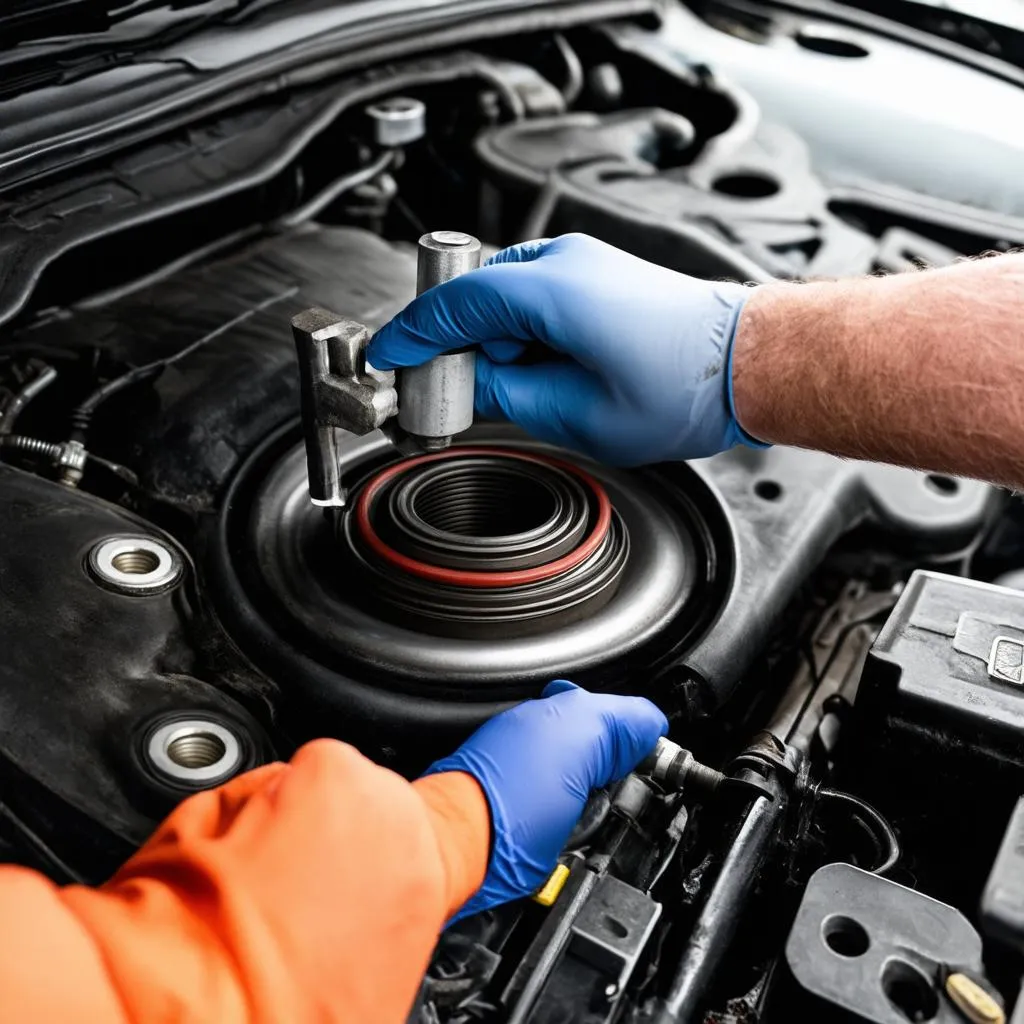Troubleshooting and fixing ignition system problems in a 2000 Mercedes E 230 can be a daunting task. This guide provides a comprehensive overview of common issues, diagnostic procedures, and repair solutions to help you get your E 230 back on the road. Whether you’re a DIY enthusiast or a seasoned mechanic, this article offers valuable insights into effectively addressing ignition system woes in your 2000 Mercedes E 230.
Common Ignition System Problems in a 2000 Mercedes E 230
Several components can contribute to ignition system failures in a 2000 Mercedes E 230. Recognizing the symptoms and understanding the underlying causes is crucial for effective troubleshooting. Common culprits include a faulty crankshaft position sensor, a failing camshaft position sensor, worn-out spark plugs, a malfunctioning ignition coil, or a problematic ignition control module. These components work together to ensure the precise timing and delivery of spark to ignite the air-fuel mixture in the engine cylinders.
A failing crankshaft position sensor can disrupt the engine’s timing, leading to misfires, rough idling, or even a complete engine stall. Similarly, a faulty camshaft position sensor can cause similar issues, impacting engine performance and fuel efficiency. Worn spark plugs can cause weak sparks, leading to incomplete combustion and reduced power. A malfunctioning ignition coil can result in misfires in one or more cylinders, while a problematic ignition control module can cause a complete failure of the ignition system.
How to Diagnose Ignition System Issues in Your 2000 Mercedes E 230
Diagnosing ignition system problems requires a systematic approach. Start by visually inspecting the spark plugs, ignition coils, and wiring for any signs of damage or wear. Check for corroded connections, cracked insulation, or loose wires. Next, use a diagnostic scanner to retrieve any stored fault codes related to the ignition system. These codes can provide valuable clues about the specific components that are malfunctioning.
Testing the ignition coil’s resistance with a multimeter can help identify a faulty coil. Similarly, checking the crankshaft and camshaft position sensors with an oscilloscope can reveal any irregularities in their signal output. If you suspect a problem with the ignition control module, a specialized diagnostic tool may be necessary to test its functionality.
Fixing Your 2000 Mercedes E 230 Ignition System: Step-by-Step Guide
Once you have diagnosed the problem, you can proceed with the necessary repairs. Replacing worn spark plugs is a relatively straightforward task. Simply remove the old plugs and install new ones, ensuring they are properly gapped. Replacing a faulty ignition coil, crankshaft position sensor, or camshaft position sensor involves disconnecting the old component and installing a new one in its place. If the ignition control module is faulty, it typically requires replacement as well.
Remember to disconnect the battery before working on any electrical components. Also, consult the vehicle’s repair manual for specific instructions and torque specifications. For more complex repairs, or if you are unsure about any step of the process, it is recommended to seek professional assistance.
“Regular maintenance, including timely replacement of spark plugs and other ignition components, is crucial for preventing ignition system problems,” advises John Miller, a seasoned automotive technician with over 20 years of experience. “Addressing issues promptly can prevent further damage and ensure the longevity of your vehicle’s engine.”
Conclusion: Keeping Your 2000 Mercedes E 230 Ignition System in Top Shape
Maintaining a properly functioning ignition system is essential for the reliable performance of your 2000 Mercedes E 230. By understanding the common problems, diagnostic procedures, and repair solutions outlined in this guide, you can effectively address ignition system issues and ensure a smooth and efficient driving experience.
FAQ
- What are the signs of a bad ignition system in a 2000 Mercedes E 230? Common signs include misfires, rough idling, difficulty starting, reduced fuel efficiency, and engine stalling.
- How much does it cost to fix the ignition system in a 2000 Mercedes E 230? The cost can vary depending on the specific problem and the parts that need to be replaced.
- Can I fix the ignition system myself? Some repairs, such as replacing spark plugs, are relatively easy. However, more complex repairs may require professional assistance.
- How often should I replace my spark plugs? Consult your vehicle’s owner’s manual for the recommended spark plug replacement interval.
- What is the role of the ignition control module? The ignition control module manages the timing and delivery of spark to the engine cylinders.
- How do I test the crankshaft position sensor? You can test it with an oscilloscope to check for irregularities in its signal output.
- What tools do I need to replace the ignition coil? You will need basic hand tools, such as sockets and wrenches, and possibly a multimeter.
Common Scenarios and Questions
- Car won’t start: This could be due to a faulty crankshaft position sensor, ignition coil, or ignition control module.
- Engine misfires: Worn spark plugs, a bad ignition coil, or a faulty fuel injector could cause misfires.
- Rough idling: A vacuum leak, faulty ignition components, or dirty fuel injectors can contribute to rough idling.
Further Reading and Related Articles
- Troubleshooting Fuel System Problems in a 2000 Mercedes E 230
- Understanding Your Car’s Electrical System
- DIY Car Maintenance Tips
Need help? Contact us via Whatsapp: +1 (641) 206-8880, Email: CARDIAGTECH[email protected] or visit us at 276 Reock St, City of Orange, NJ 07050, United States. Our customer service team is available 24/7.


